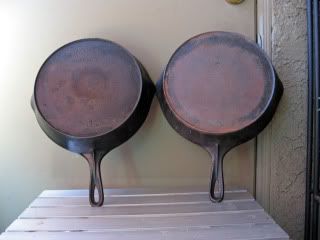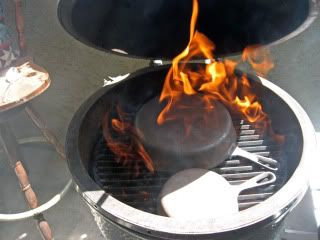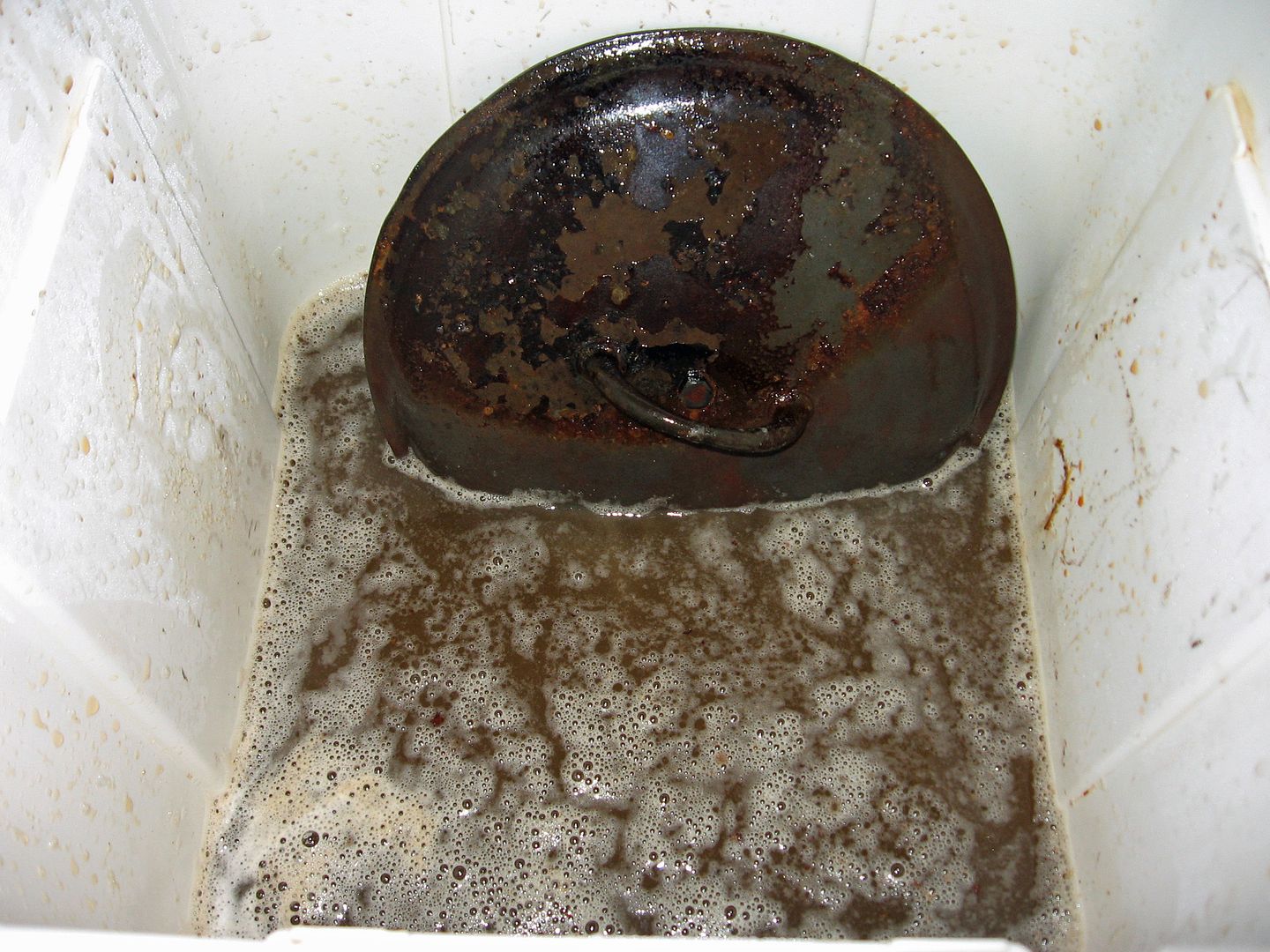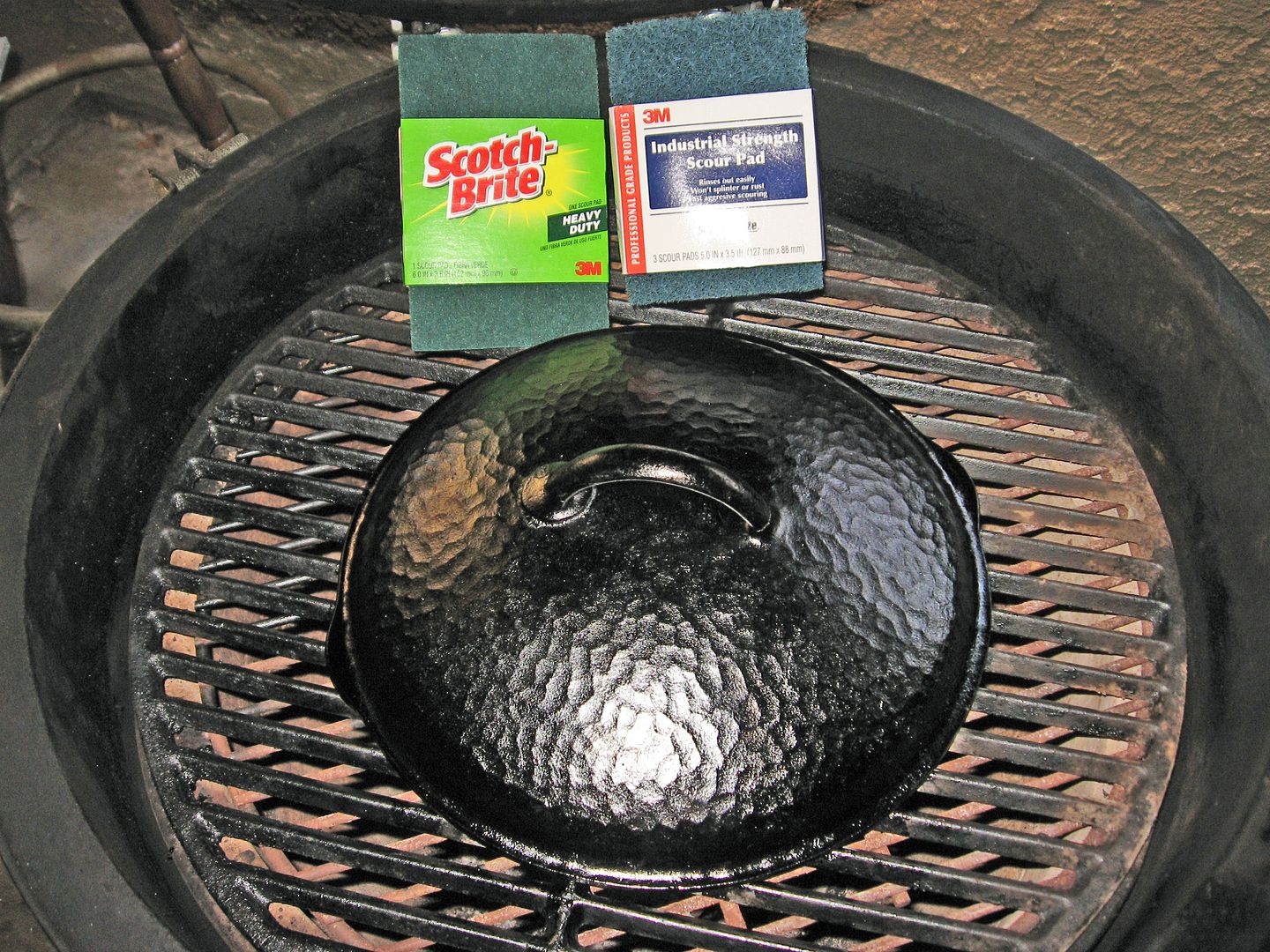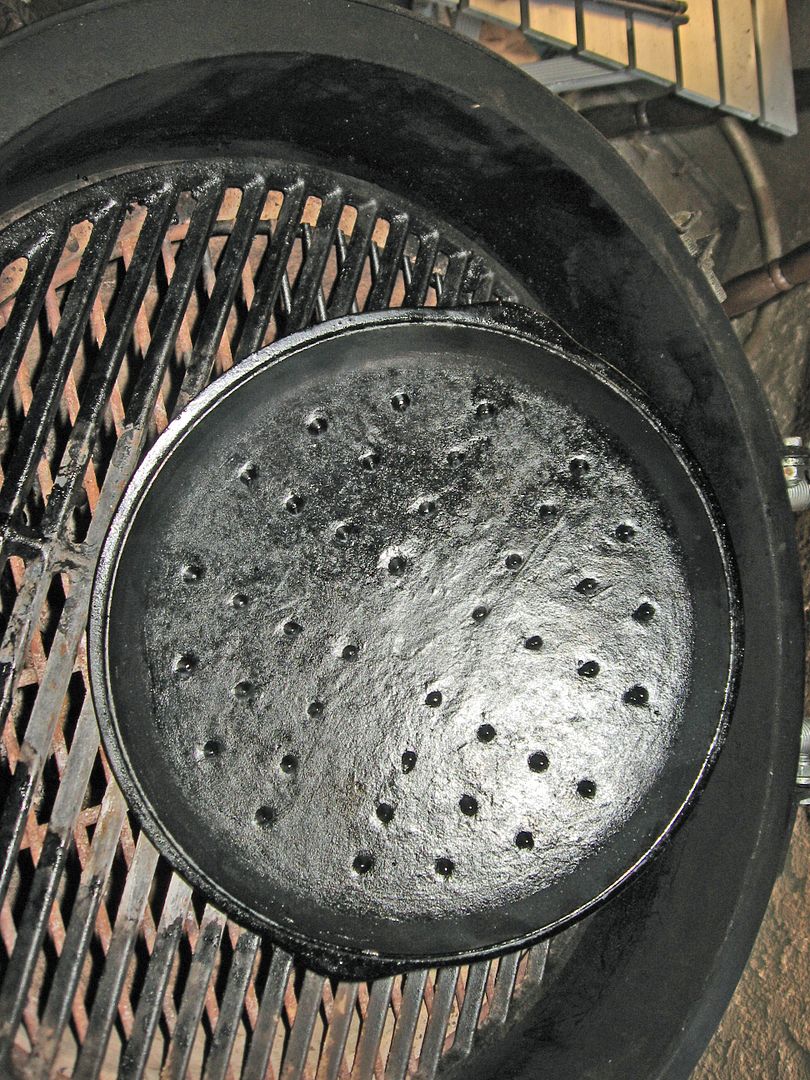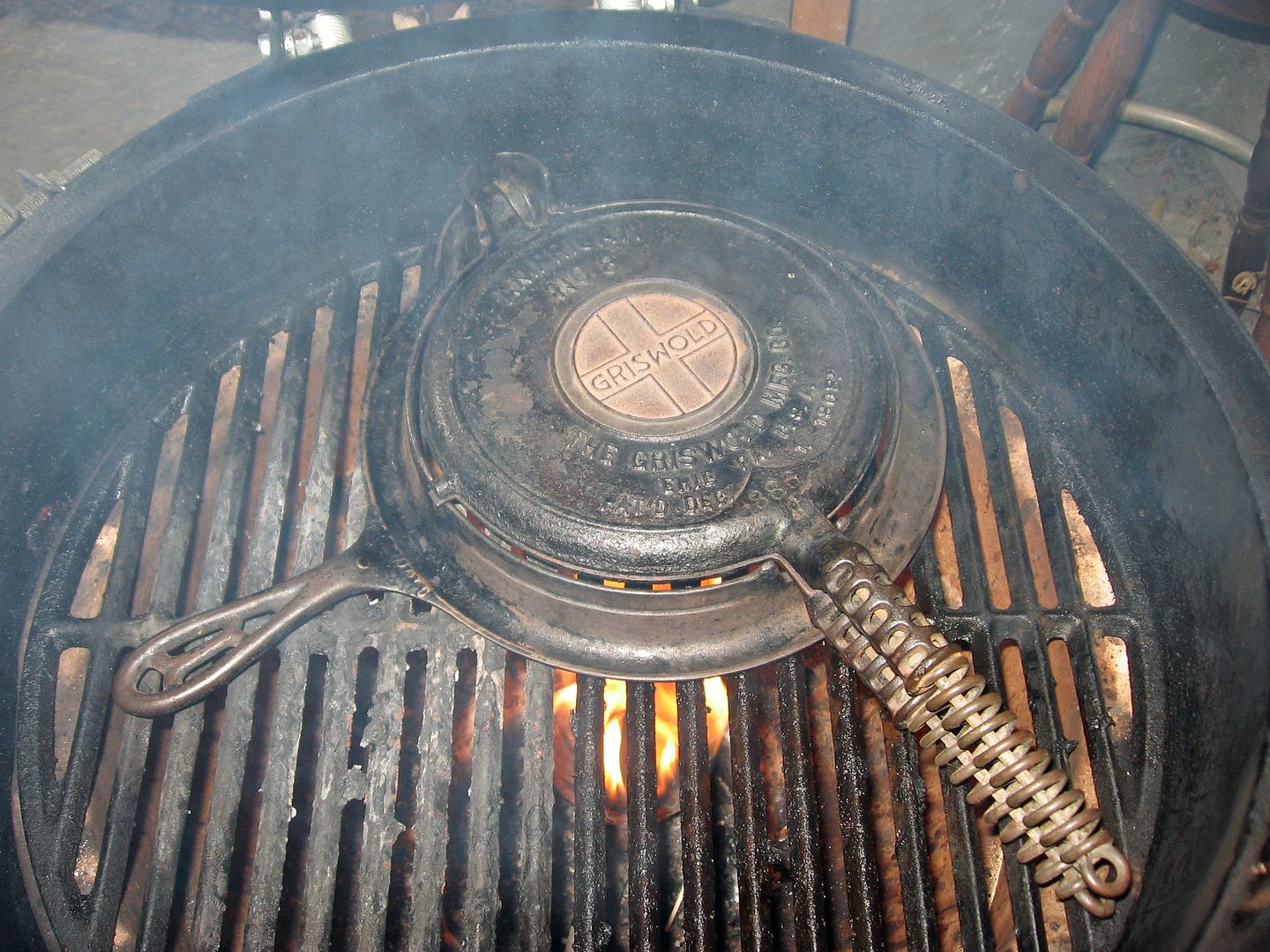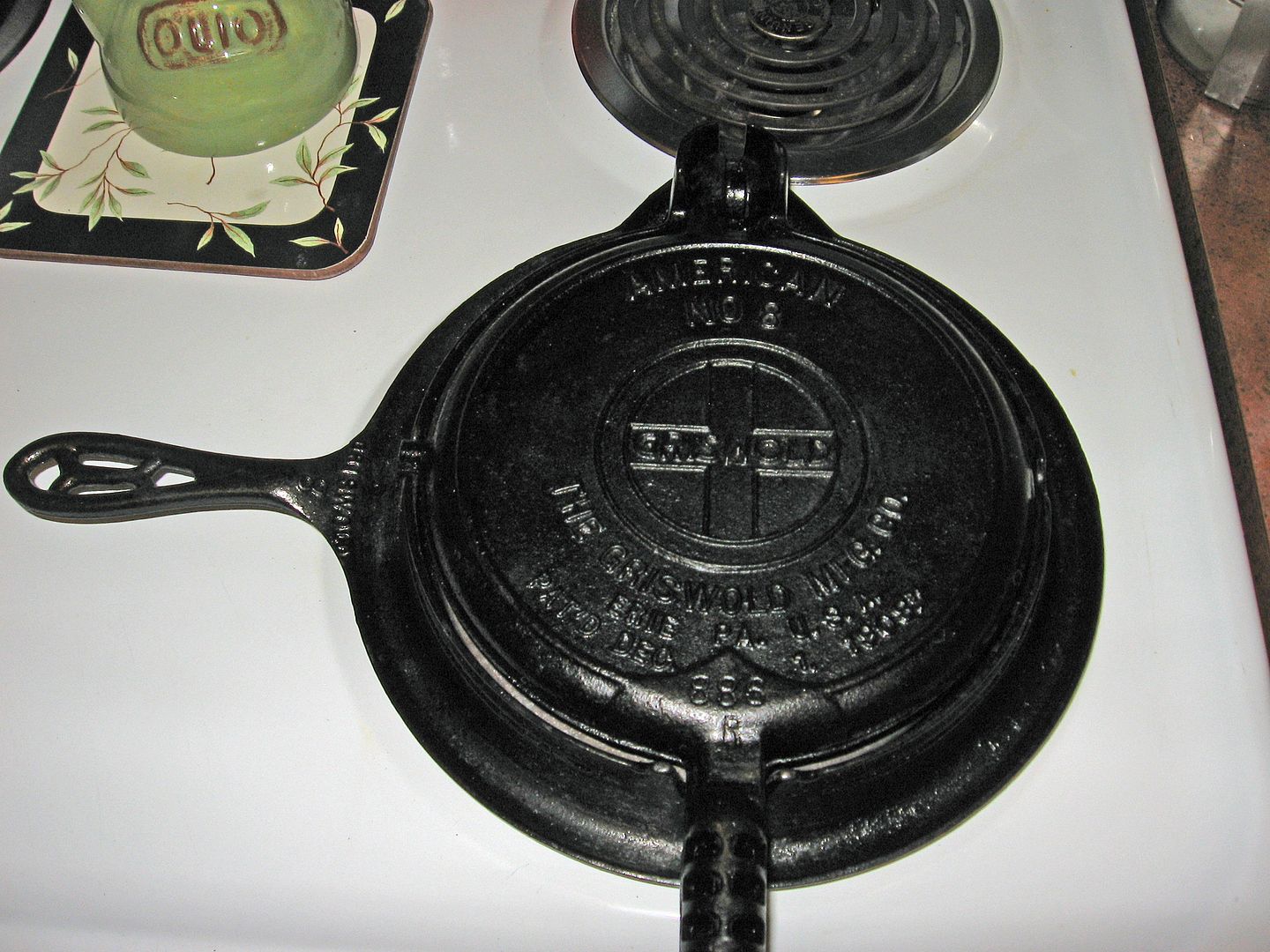Cleaning cast iron with Electrolysis
I have done this several times with good luck so I thought I would share it.
Start with a large plastic tub. Put a piece of steel rebar in each corner. Wrap the rebar with steel wire connecting all 4 pieces together.

Use Arm and Hammer WASHING SODA . I use 1/2 cup per 5 gallons of water. Fill it up enough to cover all of your pieces when they are hanging in the water. Stir the water well to dissolve the washing soda.

Place another piece of steel across the plastic tub. Do not let it touch the rebar. Using the same steel wire suspend your pans from the cross piece.
Now take your battery charger and place the positive lead to the rebar and the negative lead to the parts being cleaned. If you reverse the leads you will add the rust from the rebar to your parts. Not what you want. Now let it work. YOU MUST DO THIS IN A WELL VENTILATED AREA .

This is what it looks like while working. You will see bubbling in the water as the gas escapes.
Here is the rebar after the process is done. See all the rust collected on the rebar.

Here is the finished load. All this was done at the same time. After it was done I just wiped them dry and I use 80Grit sandpaper on an air orbital sander to finish the job. Then I wash them well and put them in the oven to dry. Then start the seasoning process.


Start with a large plastic tub. Put a piece of steel rebar in each corner. Wrap the rebar with steel wire connecting all 4 pieces together.

Use Arm and Hammer WASHING SODA . I use 1/2 cup per 5 gallons of water. Fill it up enough to cover all of your pieces when they are hanging in the water. Stir the water well to dissolve the washing soda.

Place another piece of steel across the plastic tub. Do not let it touch the rebar. Using the same steel wire suspend your pans from the cross piece.
Now take your battery charger and place the positive lead to the rebar and the negative lead to the parts being cleaned. If you reverse the leads you will add the rust from the rebar to your parts. Not what you want. Now let it work. YOU MUST DO THIS IN A WELL VENTILATED AREA .

This is what it looks like while working. You will see bubbling in the water as the gas escapes.
Here is the rebar after the process is done. See all the rust collected on the rebar.

Here is the finished load. All this was done at the same time. After it was done I just wiped them dry and I use 80Grit sandpaper on an air orbital sander to finish the job. Then I wash them well and put them in the oven to dry. Then start the seasoning process.





